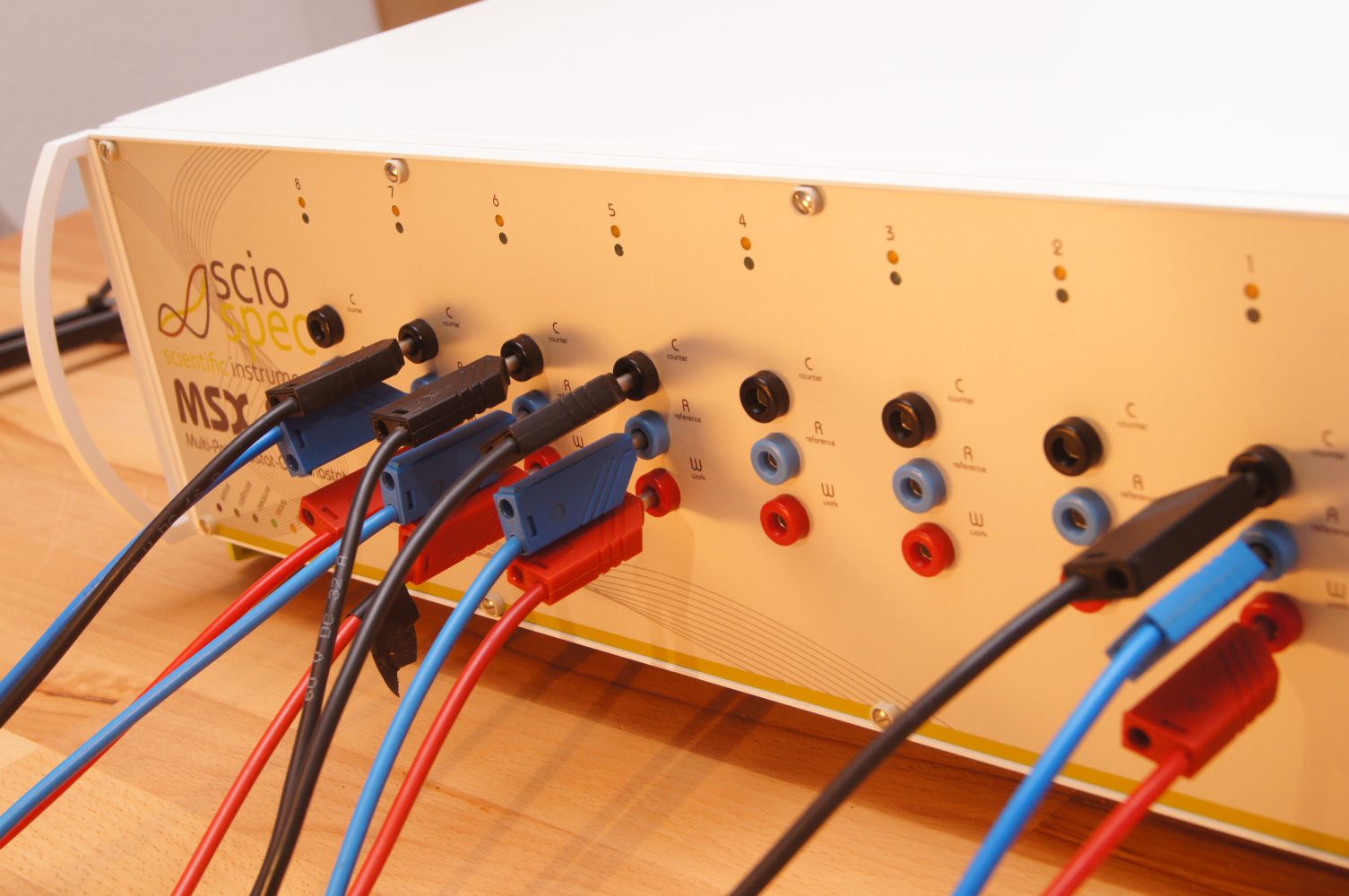
We are not a typical lab instrument manufacturer. With Sciospec it´s all about the technology platform underneath the instruments. Everything you see in our product portfolio can be customized to your needs, scaled up as further than you thought possible, migrated from lab to field use systems and combined freely with everything else we have in the platform.
Our broad range of standard instruments and modules covers all types of application scenarios for research and development as well as industrial applications.
This is a key element in our technology plattform. So whether you need a single channel or several thousands of them - we can do it.
We give you an easy path to migrate from the lab to custom solutions for the field, the fab or whereever you want to take your application.
Need our tech for your product? From just putting a standard module in your product to co-developing a brand new solution...we love doing OEM solutions.
Scalability is a key element, embedded at the heart of our technology plattform. Whether you need a single channel in a tiny mobile use form factor or thousands of channels in parallel in an automated test environment – we´ve got you covered.
There is a multitude of scenarios that demand more than one channel of a potentio-/galvanostat. The reasons vary greatly – just to name a few typical settings:
As diverse as the reasons for using multichannel arrangements are the choices for solutions. In general, there are four basic approaches:

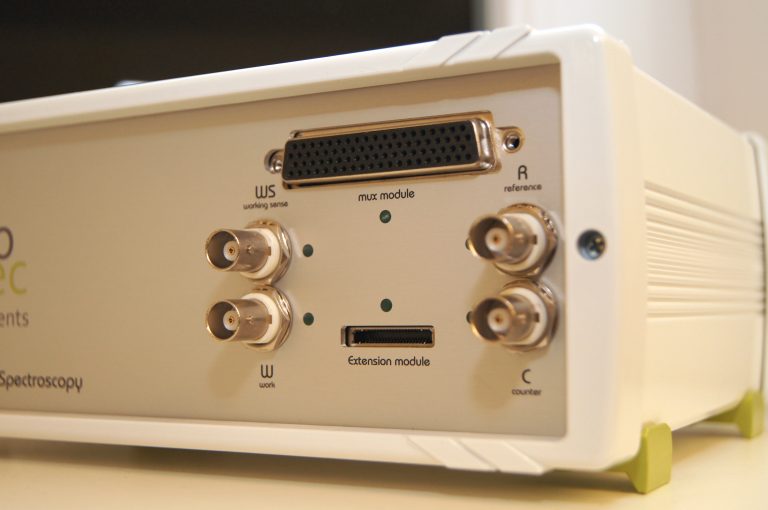
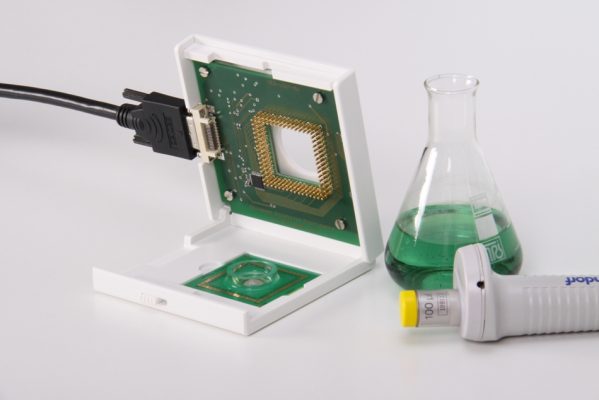
Using multiple single-channel instruments comes with many strings attached and is not acceptable in most situations. Typical downsides include:
While this might work for adding a second measurement station in a laboratory environment, this approach loses feasibility with higher channel counts.
The simple and most often least expensive way is to use a single channel instrument to a multi-channel setting by adding a multiplexer. A multiplexer is basically a set of switches that can be used to switch the measurement ports of the instrument towards several targets. Each port of the instrument needs its own multiplexer/switching components to be multiplexable. There are also scenarios of just switching one of the ports of the instrument and leave the other ports statically connected, e.g. using the same counter and reference electrode but switching between several working electrodes.
There are several types of switches that can be used for multiplexers. Semiconductor switches are very affordable have low power consumption and small footprints. On the downside they have relatively bad parasitic characteristics with leakage currents typically between several pA up to a few nA and input capacitance of a few to several hundred pF. A much better choice in terms of parasitics are relays, better yet reed relays. High quality reed switches will offer several TΩ and <1pF off isolation, extremely low parasitic capacitance < 0.7 pF (close to no cell loading), mΩ On-Resistance, zero leakage current in on state and close to zero charge injection. On the downside they are much more expensive, very large and require lots of power to operate when compared to semiconductor switches.
No matter what type is chosen, feasibility of a specific switch/multiplexer must be carefully evaluated for each application. In some cases the parasitics and timing constraints won´t matter at all, in some they decrease quality and in some they might even end up breaking the sensors.

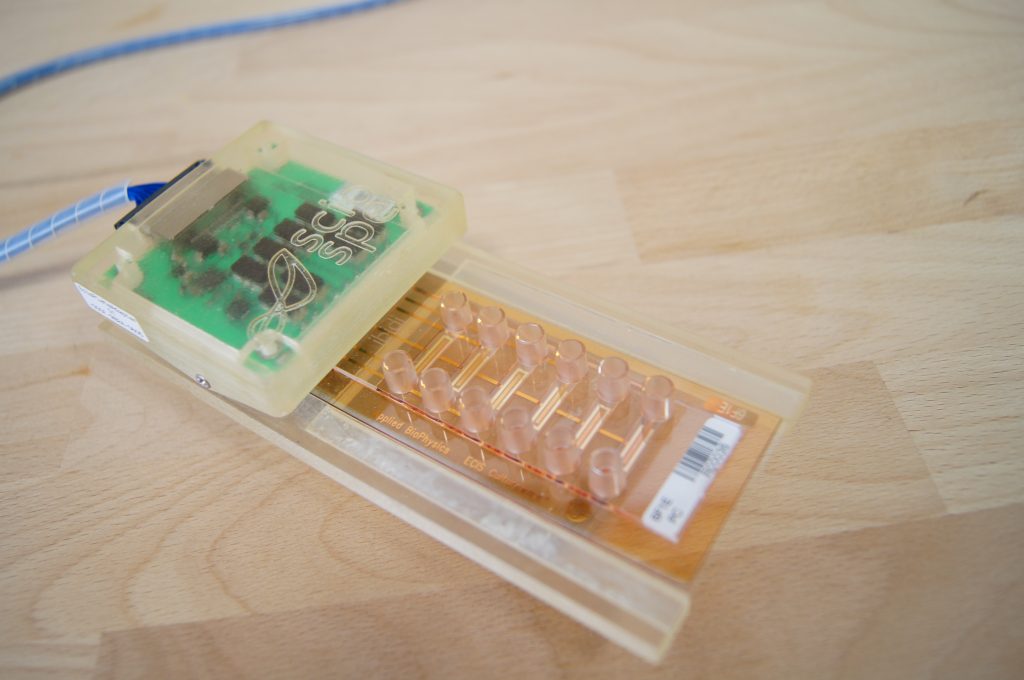
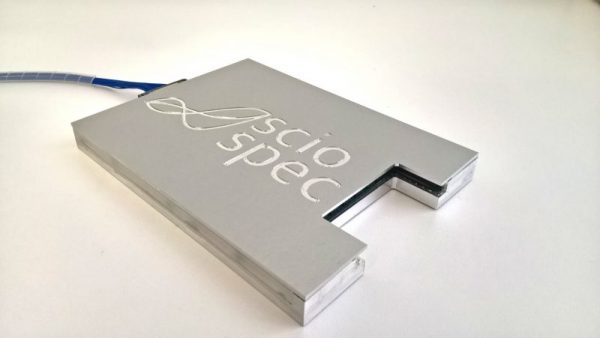
Multi-Potentio-/galvanostats (“multipot”) are basically several potentio-/galvanostat-frontends joint in one system. Due to the independent channels operating in true parallel, full parallelization of experiments can be achieved. This results in all the power of having several instruments including independent control without the major drawbacks:
While there are exceptions, typical multipots will not have galvanically isolated channels. This means their channels are not electrically independent. Practically speaking: Current flow between the channels is possible and thus the regulation in one channel can interfere with another channel. So in most applications each channel should be used on an galvanically isolated/electrically independent cell/device under test. Special care must be taken if a multipot is to be used in a non-isolated multichannel setup (e.g. multiple electrodes in the same solution).
Poly-Potentiostats (“polypots”) consist of a single potentiostat with one counter and one reference port, but with several working electrode ports. One of these working electrodes will be distinguished from the others in the sense that this is the electrode against which the regulation of the potentiostat is performed.
In theory also galvanostat mode is possible for this topology with current into the distinguished working electrode is controlled, but since the potential measurement will only be performed against a single reference electrode this mode is generally not used.
Measurement of currents into the working electrodes can be either fully parallel or sequential. While parallel measurement offers a fully synchronous view of kinetics at all working electrodes, sequential measurement offers advantages in terms of size, cost and power consumption.
Even in sequential measurement mode the regulation will naturally be synchronous since there is only one regulation circuitry for all working electrodes. Thus e.g. if a CV is applied this will happen fully synchronously for all channels.
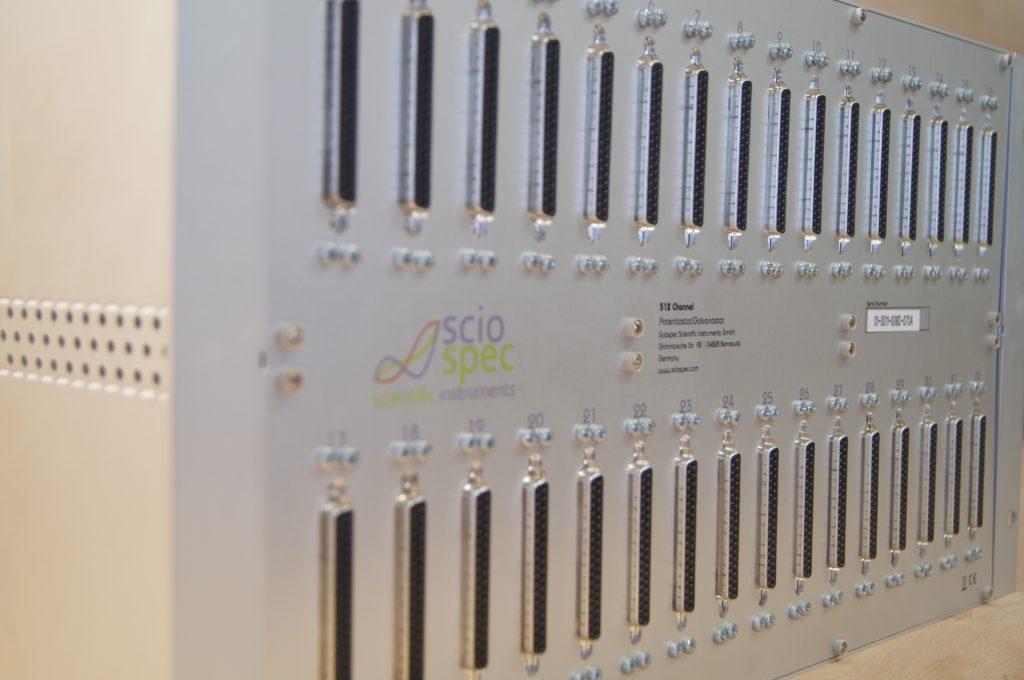
Learn more about Multichannel Potentiostat/Galvanostat Topologies
... their ups and downs and typical pitfalls of the different options
Still not the perfect fit for your application?
Then let’s custom-tailor it for you!
Our modular plaform allows for cost-efficient customization while keeping the development risk low. So what will you need? An application specific multiplexing solution, a ready-to-go portable device for mobile health or a massive multichannel platform for a screening application? Just get in touch with us!